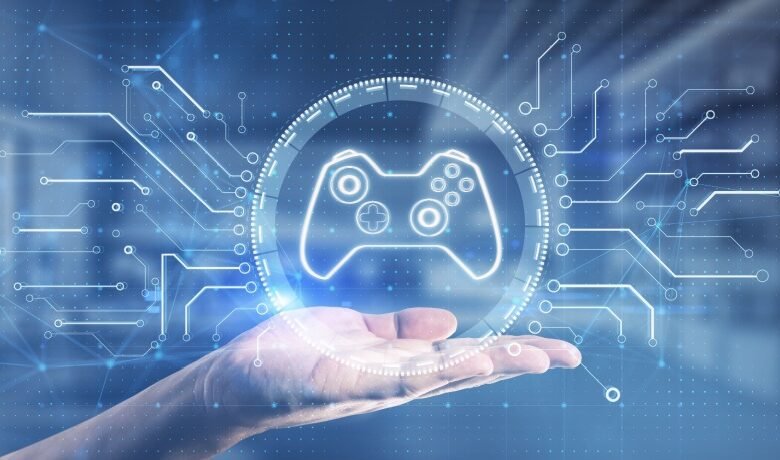Customizing Gamification Solutions To Fit Your Company Culture

Tailoring Gamification To Enhance Company Culture
In today’s rapidly evolving corporate landscape, businesses are constantly seeking innovative strategies to enhance employee engagement, improve productivity, and foster a thriving company culture. One approach that has gained significant traction is the implementation of gamification solutions. By incorporating game-like elements into everyday work tasks, companies can motivate employees, boost morale, and drive better performance. However, for gamification to be truly effective, it must be carefully customized to align with your unique company culture.
Understanding Gamification In Corporate Training
Gamification in corporate training involves using game design principles to make Learning and Development activities more engaging. Traditional training methods often struggle to capture employees’ attention or encourage active participation. Gamification addresses this challenge by integrating elements like points, badges, leaderboards, and rewards into training programs. These elements not only make learning more enjoyable but also encourage competition and collaboration, leading to improved knowledge retention and skill development.
For instance, a company focused on teamwork might implement a training module where employees earn points for completing tasks as a group. This reinforces the company’s emphasis on collaboration and fosters a sense of unity among employees. Conversely, a sales-driven organization might use leaderboards to highlight top performers, driving friendly competition and motivating employees to reach their targets.
The Role Of Company Culture In Gamification
Company culture plays a pivotal role in determining how gamification solutions should be designed and implemented. A one-size-fits-all approach to gamification can fall flat if it doesn’t resonate with the values, goals, and dynamics of your organization. Customizing gamification solutions to fit your company culture ensures that they are meaningful, relevant, and effective.
For example, in a company that values creativity and innovation, gamification strategies might involve problem-solving challenges that encourage employees to think outside the box. On the other hand, in a more structured and hierarchical organization, gamification could focus on rewarding adherence to processes and protocols.
To successfully customize gamification solutions, it’s essential to have a deep understanding of your company’s culture. This includes recognizing the behaviors, attitudes, and motivators that drive your employees. Are they motivated by competition, recognition, or the opportunity to collaborate with peers? Do they thrive in a high-energy, fast-paced environment, or do they prefer a more methodical and steady approach? By aligning gamification strategies with these cultural factors, you can create an engaging experience that resonates with your workforce.
Effective Gamification Strategies For Onboarding
Onboarding is a critical phase where new employees are introduced to your company’s culture, values, and processes. Incorporating gamification techniques for employee onboarding can make this transition smoother and more enjoyable. By gamifying the onboarding process, you can help new hires quickly acclimate to their roles, connect with colleagues, and start contributing effectively.
One effective strategy is to create a points-based system where new employees earn points for completing various onboarding tasks, such as attending orientation sessions, meeting with key team members, and completing required training modules. These points can be redeemed for rewards, such as company-branded merchandise or extra time off. Additionally, you can use game-based learning solutions to teach new hires about your company’s products, services, and policies in an interactive and engaging manner.
Another approach is to incorporate storytelling into your onboarding gamification. Create a narrative where the new employee is the protagonist, embarking on a journey to learn about the company and its culture. As they progress through the onboarding process, they unlock new chapters of the story, complete challenges, and earn rewards. This approach not only makes the onboarding experience more engaging but also reinforces the company’s values and mission in a memorable way.
Boosting Employee Engagement And Productivity
One of the most significant benefits of gamification in the workplace is its ability to boost employee engagement and productivity. By making work tasks more enjoyable and rewarding, employees are more likely to stay motivated and committed to their roles. Gamification for employee engagement can take many forms, from team-based challenges to individual achievements, and can be tailored to fit the specific needs of your organization.
For instance, you can create a company-wide challenge where departments compete to achieve certain goals, such as increasing sales, reducing costs, or improving customer satisfaction. The winning team could receive a trophy, a bonus, or a company-wide recognition event. This not only encourages employees to work toward common goals but also fosters a sense of camaraderie and teamwork.
Another approach is to gamify everyday tasks, such as completing reports, attending meetings, or achieving sales targets. Employees can earn badges or points for each completed task, which can be displayed on their profiles or exchanged for rewards. This approach adds an element of fun to routine tasks and encourages employees to take pride in their work.
The Future Of Gamification In Business
As technology continues to evolve, so does the potential for gamification solutions for businesses. The future of gamification in business will likely see the integration of advanced technologies like Artificial Intelligence, Virtual Reality, and data analytics to create even more immersive and personalized experiences.
For example, AI-driven gamification platforms can analyze employee behavior and preferences to tailor gamification experiences to individual needs. This level of personalization ensures that gamification remains relevant and engaging for each employee, regardless of their role or department. Additionally, Virtual Reality can be used to create immersive training simulations, allowing employees to practice skills in a realistic yet risk-free environment.
While game-based learning solutions and gamification share similarities, it’s important to note that they are distinct concepts. Game-based vs. gamification debates often center on the level of integration and purpose. Game-based learning involves using actual games to teach specific skills or knowledge, while gamification applies game-like elements to non-game contexts to enhance engagement and motivation. Both approaches have their place in the corporate world, and the choice between them should be guided by your company’s specific goals and culture.
Conclusion
Customizing gamification solutions to fit your company culture is not just about making work more fun—it’s about aligning these strategies with your organization’s values, goals, and employee motivations. By understanding your company culture and tailoring gamification accordingly, you can create a more engaging, productive, and cohesive workplace. As businesses continue to explore the potential of gamification in the workplace, those that prioritize cultural alignment will be best positioned to reap the benefits of this innovative approach.
Source link





